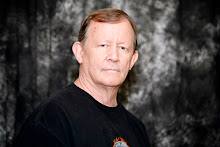American Football - a game of high stakes and even higher emotions, whether it's the joy of watching an immaculate catch, the anguish of losing a game by a "wide-right" field-goal, or the worry of seeing your quarterback blindsided by an angry lineman with something to prove.
What makes football a high-paced, anything-can-happen event also makes it very difficult for digital photographers. You must deal with 22 players on the field (not to mention referees and coaches trying to get their points across), plus the midday sun outside or inconsistent lighting inside domes. Unless you have a press pass, you also must deal with nose-bleed seats in large stadiums and shouting and screaming fans ready to jump up at a moment's notice to block your shot. Whew!
To help you score a touchdown with your digital photos I've listed 9 digital photography tips. The first five are mentioned in this article with tips 6-9 listed in Part II.
1) Don't Get Your Hopes Up
This sounds like a lousy tip to start things off, but hear me out. If you're sitting in nose-bleed seats and don't own a digital camera with a large optical telephoto zoom (digital zoom doesn't matter), football players will likely appear as just large dots in your photos. And if you're sitting behind a tall person that loves to stand up and cheer after every play, good luck taking great photos from your seat without getting a shot of the person's head in the way.
In either of these two scenarios, look around the stadium for aisles or walkways where you can hang around without impeding others' views (and getting security nervous). You need a clear line of sight; an errant head or foam "we're number one" hand appears in too many photos.
2) Buy a Camera with Plenty of Adjustment Features
I'm not saying you must run out and purchase a $1,000+ digital SLR (though it may help!), but make sure the digital camera you buy has plenty of adjustment options. At a minimum you should be able to adjust the shutter speed, ISO settings (more on both later), and metering or exposure levels to adjust to difficult lighting scenarios.
One other point - look for digital cameras with image stabilization features or lenses. Though this won't offset any blurriness caused by football players moving at high speed, it may reduce blurriness caused by shaking when holding a camera.
3) Ensure Your Camera can be Taken to the Game
Don't get sacked before you even get a chance to sit down. Stadiums have different rules about what you can bring to the game. At high-school or intramural games you may be able to bring any camera you desire. For college and professional games you may be limited to cheap compacts, "non-professional" digital cameras, or cameras with a small maximum telephoto zoom.
4) Bring the Right Accessories
Bringing a digital camera is just the tip of the iceberg, like the extra point that comes after a touchdown. At a minimum you need:
* A lens hood - Focus light to your camera, essential on sunny days (even if it's cold).
* Extra memory - Great shots won't end at halftime; don't let your memory fill up by then.
* Extra batteries - What if a game goes to overtime?
* Waterproof camera bag - In case soda or alcoholic beverages are spilled.
* Cleaning supplies such as dry napkins and a lens-cleaning kit - See above.
If you're attending a football game that lets you take photos on the sidelines, bring along a tripod AND if you own one, a spare digital camera. The digital camera mounted on the tripod can be focused near the center of the field to take photos without camera shake, and you can use your spare camera for quick photos if the action is outside the other camera's range of vision. Just be prepared to move quickly if the action gets too close!
5) Don't Forget Tailgate Parties
Tailgate parties are as much of a part of the football experience as the game itself. Bring extra memory and batteries to take photos of your friends and other fans around the stadium. Snap a photo of the person wearing a rainbow wig, the fans painted in their teams' colors, and of impressive grilling setups.
Part II of this article will discuss more camera settings necessary to take quick photos during plays, as well as more advice on what you can do to prepare before the game.
Copyright 2008 Andrew Malek.
About the Author
Andrew Malek is the owner of the MalekTips computer and technology help site at http://www.malektips.com . Whether you're ready to buy a new digital camera and need buying advice, or need hints on taking advantage of the camera you already own, visit http://malektips.com/camera for hundreds of free digital photography tips.
10 Simple Digital Photography Techniques
17 years ago
